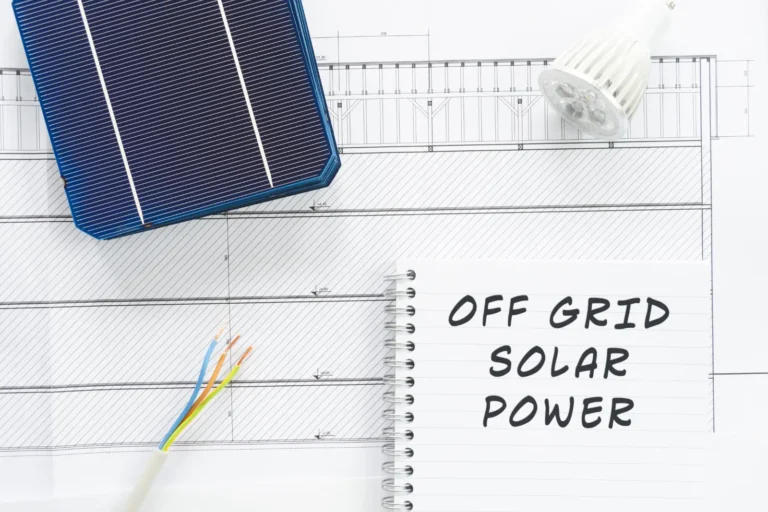When was solar power invented? Solar power has a fascinating history that dates back centuries. The origins of solar power can be traced back to the 7th century B.C., when ancient civilizations discovered the potential of harnessing the sun’s energy. Through the years, solar technology has undergone significant advancements, leading to its widespread use in present times. Understanding the historical development of solar power is crucial in appreciating its transformative journey.
When was solar power invented? – Key Points:
- Solar power has a rich history that spans centuries
- The origins of solar power can be traced back to the 7th century B.C.
- Solar technology has evolved over time, leading to its widespread use today
- Exploring the historical development of solar power helps us appreciate its significance
- The invention of solar energy has paved the way for renewable and sustainable solutions
The First Solar Collector and Photovoltaic Effect
Solar power history Isolar power historyn 1767, Swiss scientist Horace de Saussure constructed the world’s first solar collector, a groundbreaking invention that paved the way for the development of solar energy. This pioneering device during the early days of solar power, demonstrated the potential to harness and utilize the sun’s rays for practical purposes. It consisted of a box made of wood, insulated with layers of glass, and painted black on the inside to enhance heat absorption. The outer glass layer allowed sunlight to penetrate while trapping the heat inside, creating a greenhouse effect. The solar collector reached temperatures significantly higher than the surrounding air, confirming the effectiveness of capturing solar energy.
Decades later, Sir John Herschel, a British astronomer, utilized de Saussure’s solar collector during his 1830s expedition to South Africa. Herschel used the solar collector to cook food, harnessing the sun’s power to meet practical needs in remote locations. This early application demonstrated the potential for solar energy to provide sustainable solutions.
In 1839, French physicist Edmond Becquerel experimentally identified the photovoltaic effect, an essential discovery for the development of solar power. He observed that certain materials, when exposed to light, produced an electric current. This phenomenon hinted at the possibility of directly converting sunlight into electricity. However, at the time, the photovoltaic effect remained more of a scientific curiosity than a practical application.
Albert Einstein furthered the understanding and application of the photovoltaic effect in 1905 when he theorized the existence of light particles known as photons. Einstein predicted that photons, when interacting with certain materials, could eject electrons, leading to an electric current. This groundbreaking insight laid a crucial theoretical foundation for the utilization of solar energy.
Building upon Einstein’s work, a team of researchers – Daryl Chapin, Calvin Fuller, and Gerald Pearson – developed the silicon solar cell in 1954. This innovation marked a significant turning point in the history of solar energy. The silicon solar cell showcased the potential to directly convert sunlight into electricity using a semiconductor material – silicon. This breakthrough invention laid the foundation for the modern-day solar panels widely used today.
Solar Power in Space and Engineering Improvements
Solar power in space has been a pioneering field since the launch of Vanguard 1 satellite in 1958, which marked a significant milestone in the use of solar technology in satellite systems. Vanguard 1 became the first satellite to utilize a small solar panel to power its radios, paving the way for future advancements in space exploration and communication.
Since then, engineering improvements have played a crucial role in making solar cells more affordable and accessible. The continuous efforts in research and development have led to significant advancements in solar technology, resulting in improved efficiency and reduced manufacturing costs.
In the late 20th century, solar cells began making their presence felt outside space applications. They started appearing on rooftops and in large solar farms, revolutionizing the generation of electricity for everyday use. Engineering innovations, such as the development of more efficient materials and manufacturing processes, have contributed to the widespread adoption of solar panels as a viable renewable energy source.
“Solar power in space has not only expanded human knowledge and exploration but has also catalyzed engineering improvements that have made solar energy more affordable and accessible on Earth.”
One of the key benefits of engineering improvements in solar power is the significant reduction in the cost of solar panels. Over the years, advancements in manufacturing techniques and economies of scale have led to a substantial decrease in the cost of producing solar cells. This cost reduction has made solar energy more viable and has contributed to its growing popularity as a clean, sustainable energy source.
The Vanguard 1 Satellite
The Vanguard 1 satellite, launched by the United States Naval Research Laboratory, was instrumental in demonstrating the potential of solar power in space. Its successful deployment of a small solar panel to power onboard systems showcased the feasibility of utilizing solar energy in satellite missions.
Solar panels in space offer several advantages over traditional power sources. They provide a consistent and reliable source of energy, eliminating the need for fuel or battery replacements. Additionally, solar panels enable long-duration missions by continuously generating electricity from the abundance of sunlight available in space.
The engineering advancements in solar power have not only transformed the way we explore space but have also propelled the adoption of solar energy on Earth. The continuous improvements in efficiency and cost reduction have made solar power a key player in the global transition towards a sustainable and clean energy future.
Solar energy timeline
| Solar Power in Space Milestones | Year |
|---|---|
| Launch of Vanguard 1 satellite, utilizing solar power for communication | 1958 |
| Development of high-efficiency solar cells for space missions | 1960s |
| Integration of solar panels in various international space missions | 1970s – present |
| Deployment of the International Space Station with extensive solar arrays | 1998 |
| Advancements in space solar power transmission research | 2000s – present |
Achievements and Milestones in Solar Energy
Several significant achievements have occurred in the history of solar energy. In 1981, Paul MacCready built the Solar Challenger, the first solar-powered aircraft. This groundbreaking feat demonstrated the potential for solar-powered transportation and opened doors to further innovation in the field of aviation.
Solar energy has also had a notable impact on politics, with solar-powered presidencies leaving a mark in history. In 1979, President Jimmy Carter installed solar panels on the roof of the White House, symbolizing his commitment to renewable energy. Unfortunately, his successor, Ronald Reagan, ordered their removal in 1986. However, solar energy made a comeback during President Barack Obama’s term, with the installation of solar panels and a solar water heater in the White House.
Another area of significant progress is solar conversion efficiency. Over the years, scientists and researchers have made remarkable advancements in improving the efficiency of solar cells. In 2016, the University of New South Wales achieved an impressive solar conversion efficiency rate of 34.5%. This increased efficiency contributes to the overall effectiveness and viability of solar energy as a sustainable power source.
Round Up
Solar power has undergone a transformative journey since its inception, paving the way for a sustainable and renewable energy future. From ancient civilizations’ use of magnifying glasses to the breakthrough development of highly efficient silicon solar cells, solar energy has evolved into one of the fastest-growing sources of electricity today.
Thanks to ongoing advancements in solar technology, such as increased efficiency and flexibility, solar power continues to play a crucial role in reducing carbon emissions, combating climate change, and ensuring energy independence. With the declining costs of solar panels and the availability of numerous government incentives, solar energy has become more accessible and affordable for homeowners, businesses, and communities across the United States.
As the demand for clean energy continues to rise, solar power is poised to play an even larger role in the future energy landscape. From powering homes and businesses to fueling electric vehicles and even supplying energy to space missions, solar energy’s potential is vast. With ongoing research and development, we can expect further technological innovations and breakthroughs that will enhance the efficiency, storage, and integration of solar power into our everyday lives.
By embracing solar energy, we not only reduce our reliance on fossil fuels but also contribute to a cleaner and more sustainable planet. Solar power today is an essential part of the global renewable energy movement, and its continued growth and adoption are key in driving us towards a greener and brighter future for generations to come.
FAQ
When was solar power invented?
Solar power has a rich history that dates back to the 7th century B.C. when it was first used to concentrate the sun’s heat using glass and mirrors.
What are the origins of solar power?
Solar power’s origins can be traced back to the ancient use of magnifying glasses and burning mirrors to harness the sun’s energy.
Who invented the first solar collector?
The world’s first solar collector was built by Swiss scientist Horace de Saussure in 1767, which was later used by Sir John Herschel in the 1830s to cook food during his South Africa expedition.
What is the photovoltaic effect?
The photovoltaic effect was discovered by French scientist Edmond Becquerel in 1839. It demonstrated that certain materials can generate electricity when exposed to light.
Who developed the silicon solar cell?
The silicon solar cell was developed by Daryl Chapin, Calvin Fuller, and Gerald Pearson in 1954. This groundbreaking invention paved the way for modern solar technology.
When was solar power used in space?
Solar power was first used in space in 1958 when the Vanguard 1 satellite used a small solar panel to power its radios.
Have there been engineering improvements in solar technology?
Yes, engineering improvements have made solar cells cheaper and more accessible over time. This has contributed to the increasing use of solar panels on rooftops and in large solar farms.
What are some achievements and milestones in solar energy?
Some notable achievements include the successful flight of the solar-powered aircraft Solar Challenger in 1981 and the installation of solar panels in the White House by President Jimmy Carter in 1979. The continuous improvement in solar conversion efficiency, with the University of New South Wales reaching 34.5% efficiency in 2016, is also a significant milestone.
What is the current state of solar power?
Solar power has evolved to become one of the fastest-growing sources of electricity. With ongoing advancements in technology, increased efficiency, and reduced costs, solar energy continues to play a vital role in shaping a sustainable future.







